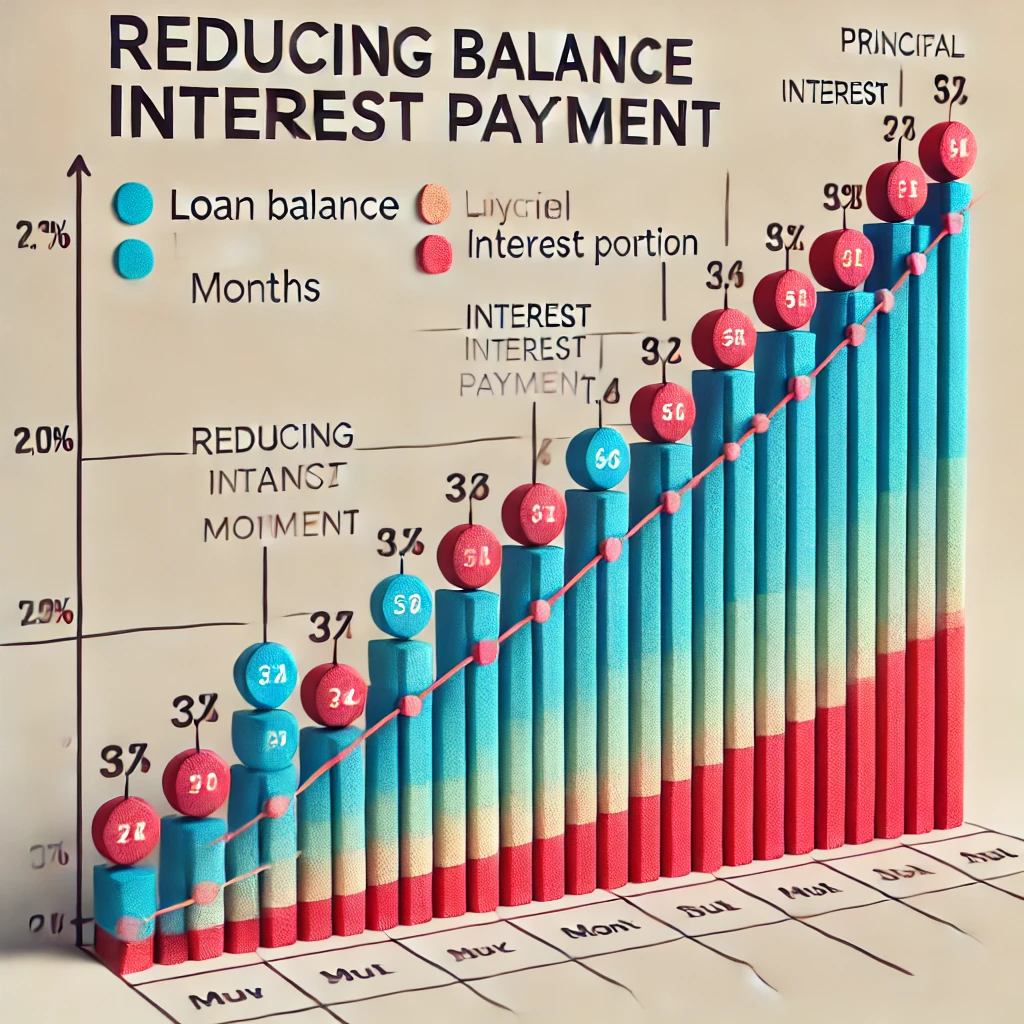If you’re exploring loan options, you may have come across the term “reducing balance method” as a way to calculate interest. This interest calculation method is widely used for loans where the borrower’s principal balance decreases over time, such as personal loans, car loans, and some home loans. In this article, we’ll break down how the reducing balance method works, its benefits, and why it may be an advantageous choice for borrowers.
What is the Reducing Balance Method?
The reducing balance method, also known as the diminishing balance method, calculates interest on the outstanding loan amount (principal) after each repayment. Unlike the flat interest method, where interest is charged on the original loan amount, the reducing balance method recalculates interest based on the remaining loan balance after each repayment. This means that the interest amount gradually decreases as the principal is paid down over time.
How the Reducing Balance Method Works
To understand how this works, let’s break it down with an example:
- Loan Amount (Principal): Let’s say you’ve taken a loan of $5,000.
- Interest Rate: Assume an annual interest rate of 10%.
- Loan Tenure: You plan to repay the loan over 1 year with monthly installments.
In the reducing balance method, each monthly payment reduces the loan balance, and interest for the next month is calculated on the new, reduced balance. Here’s a quick breakdown:
- Month 1: Interest is calculated on the full $5,000.
- Month 2: After you make your first payment, the balance reduces (let’s say to $4,600). Now, interest is calculated on $4,600, not the original $5,000.
- This process continues, and the interest keeps decreasing each month as the principal reduces.
Advantages of the Reducing Balance Method
- Cost Savings on Interest: Since interest is calculated on a progressively decreasing principal, the total interest you pay over the loan tenure is generally lower than with the flat-rate method.
- Transparency in Interest Charges: The reducing balance method reflects the actual interest owed on the outstanding principal, which gives borrowers a clearer view of their financial progress.
- Encourages Faster Repayment: The reducing balance method often incentivizes borrowers to pay off their loans more quickly since early repayments reduce the interest costs.
Comparison with Flat-Rate Method
In a flat-rate method, interest is calculated on the full loan amount throughout the entire loan period, meaning you pay more interest overall. For example, with a $5,000 loan at a 10% flat rate, interest would always be calculated on the initial $5,000, regardless of how much has already been repaid. In contrast, the reducing balance method will base interest on the remaining amount, making it a more affordable option in many cases.
| Criteria | Reducing Balance Method | Flat-Rate Method |
| Interest Calculation | Based on outstanding balance | Based on original principal |
| Interest Cost | Lower overall cost | Higher cost |
| Transparency | Clearer and more accurate | May seem higher due to fixed rate |
Is the Reducing Balance Method Right for You?
The reducing balance method is particularly beneficial for borrowers who want to save on interest costs and are comfortable with slightly higher repayments initially. Since it reflects the decreasing balance, it’s often the preferred choice for personal loans and other amortizing loans. Before committing, always calculate your monthly repayments using a loan calculator or consult with your lender to ensure the repayment structure suits your financial goals.
Using the reducing balance method can make a real difference in the overall cost of your loan, helping you manage repayments more effectively. When looking for loans, understanding the difference between interest calculation methods will empower you to make better financial decisions that align with your needs.

